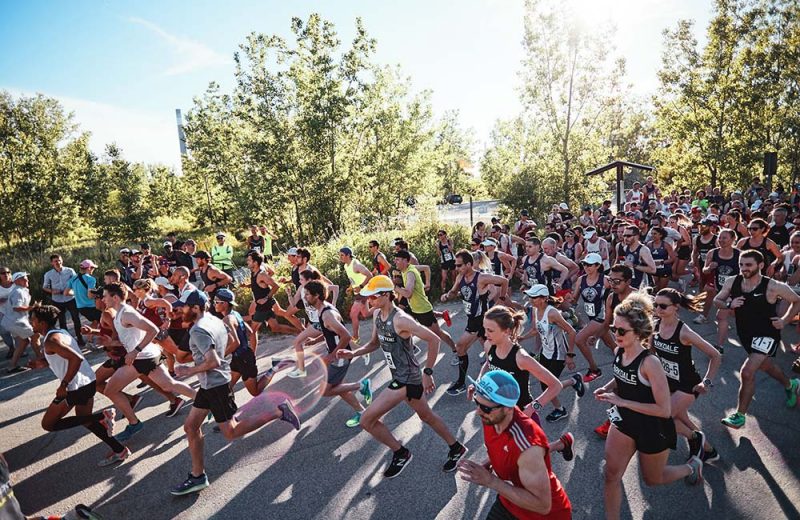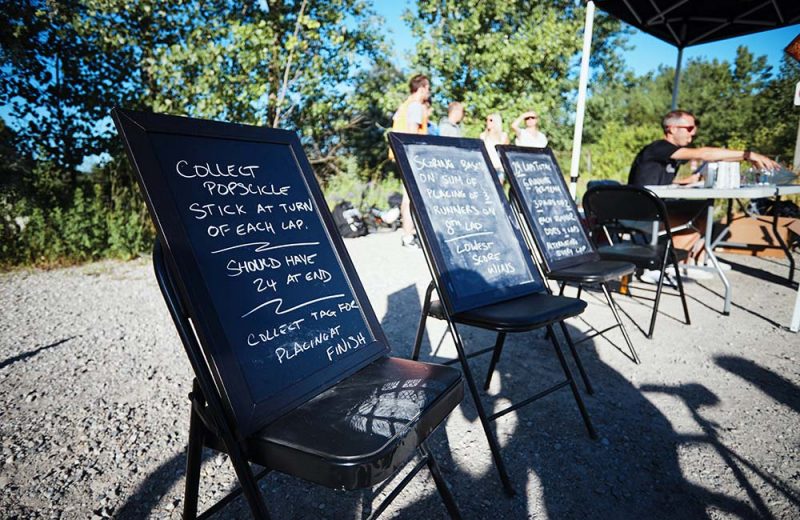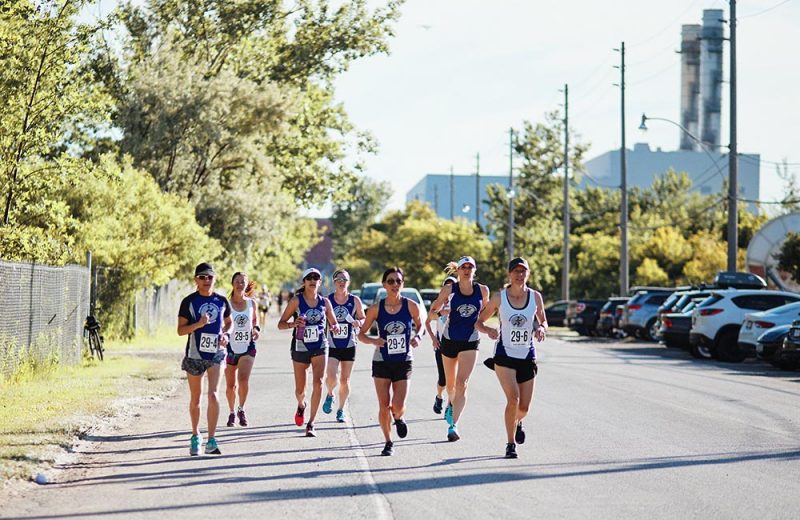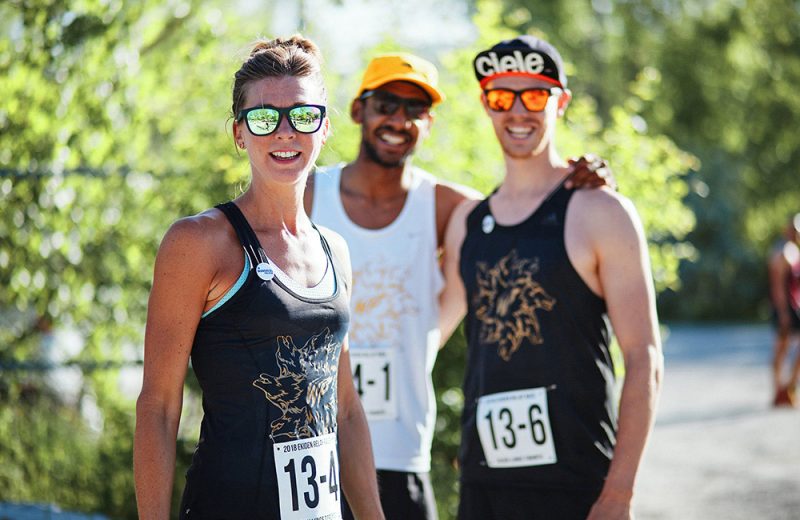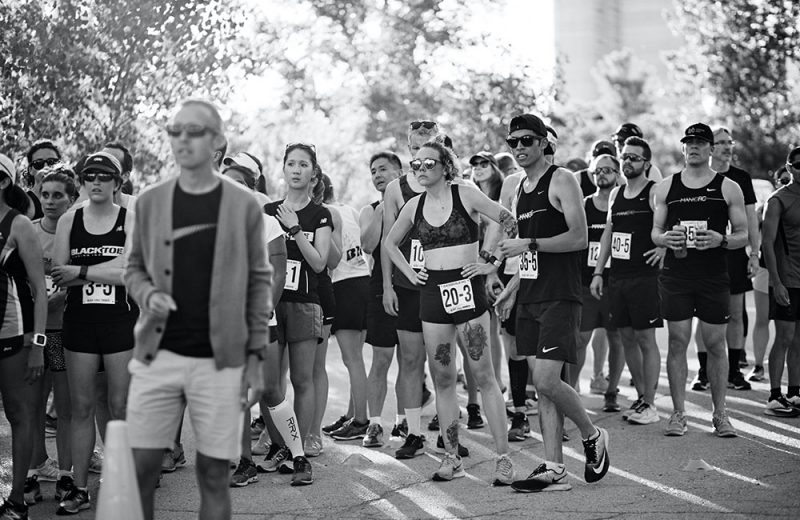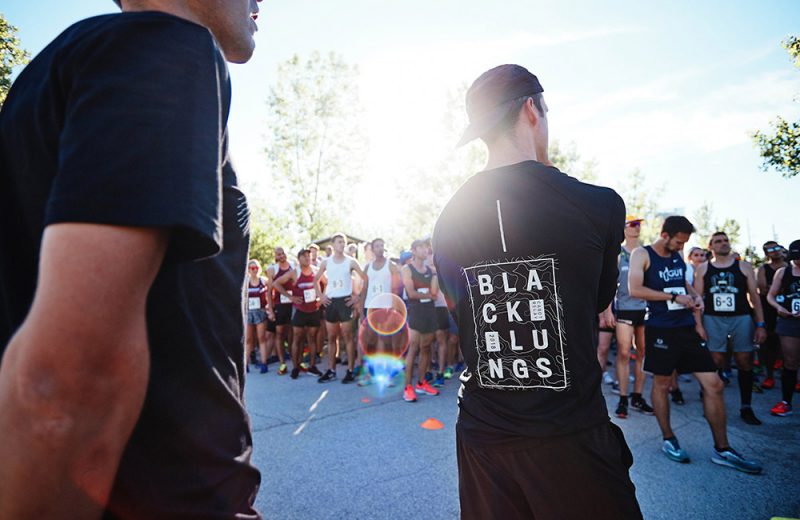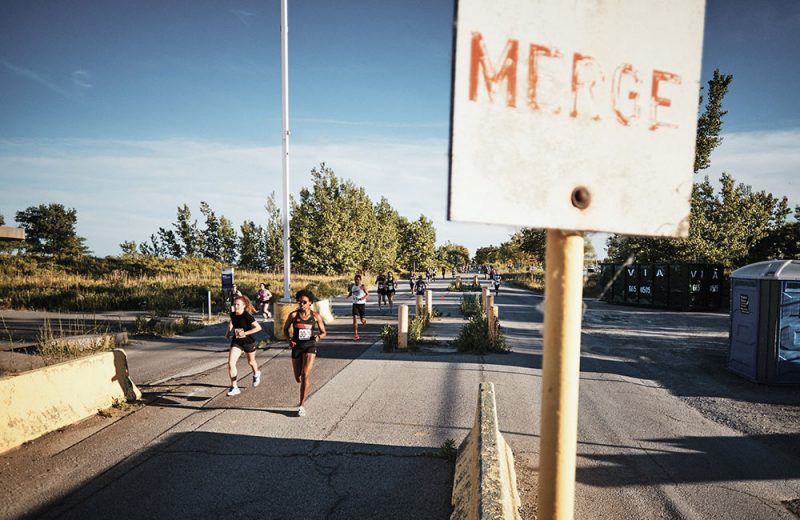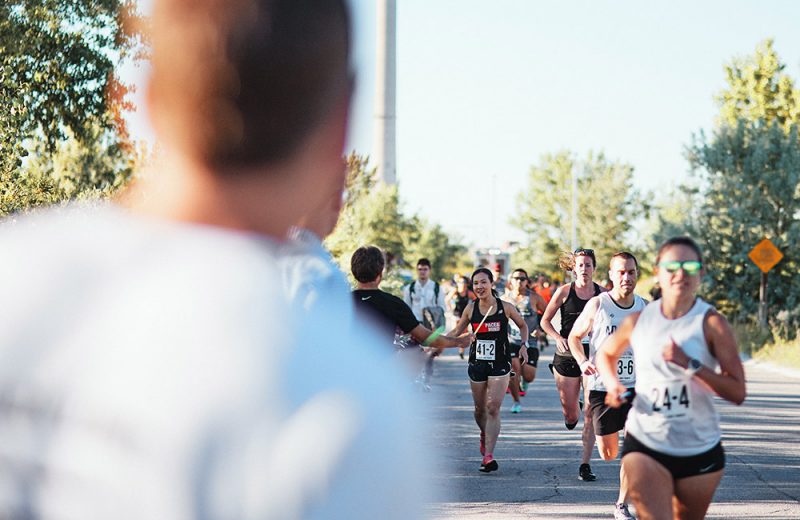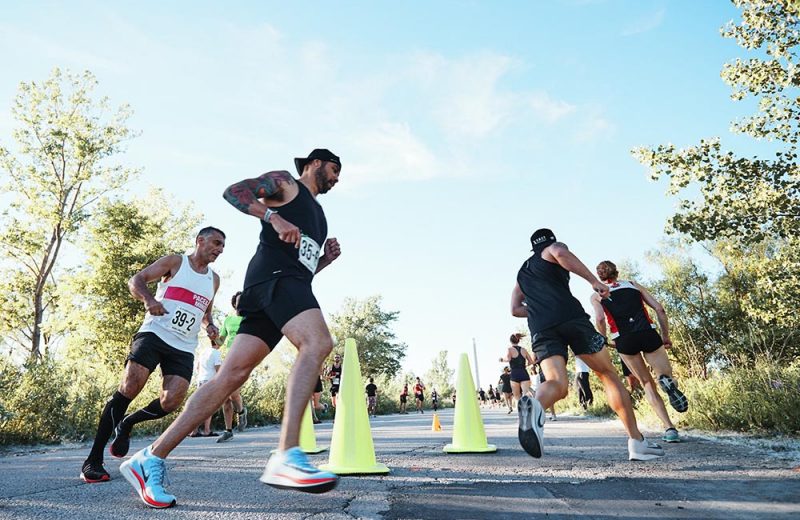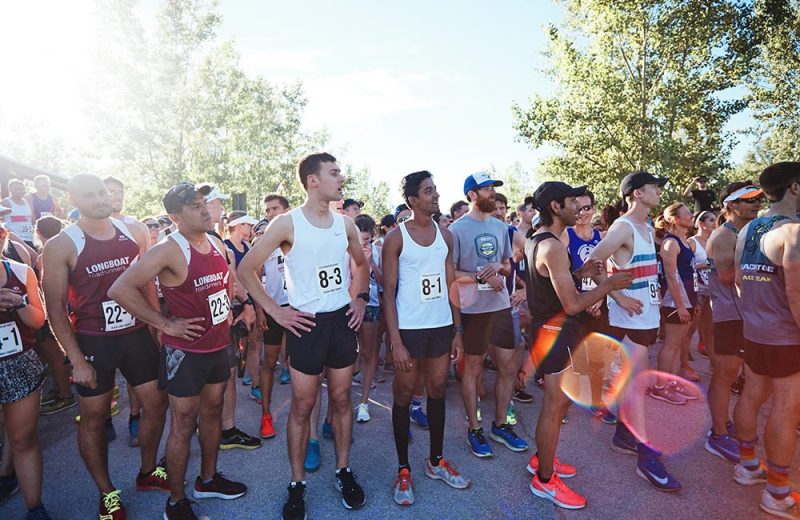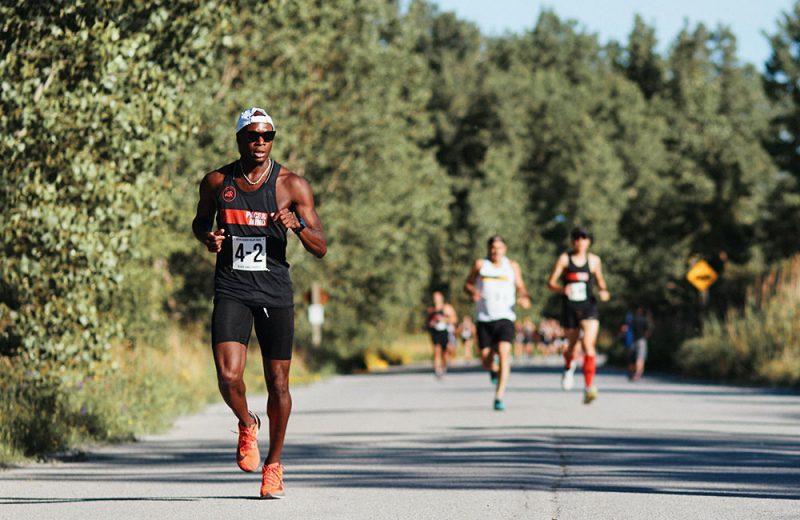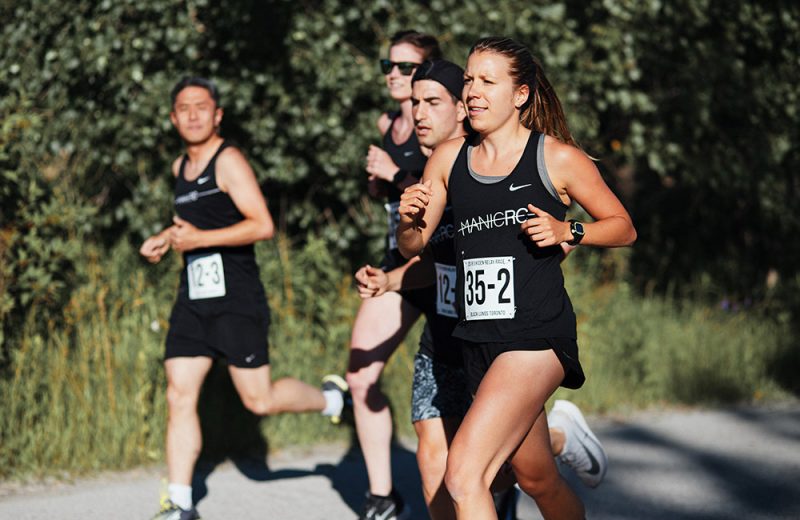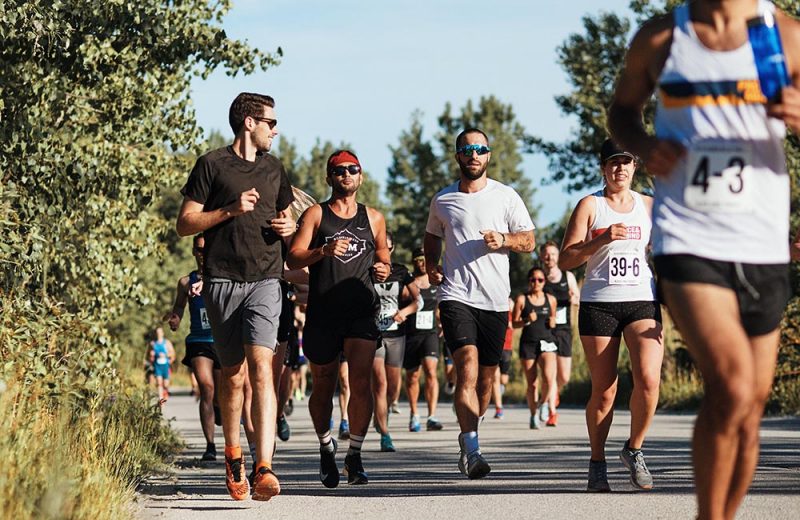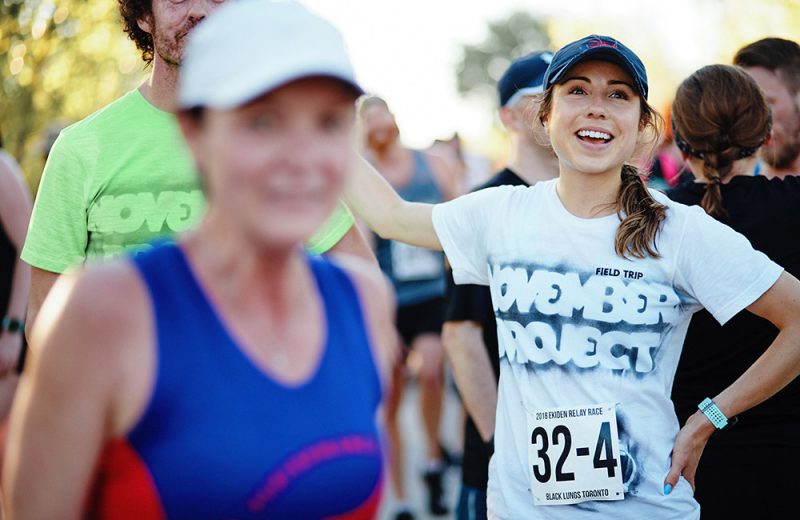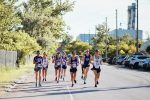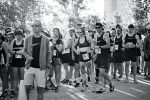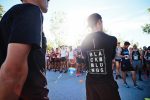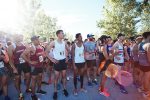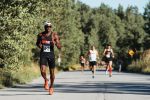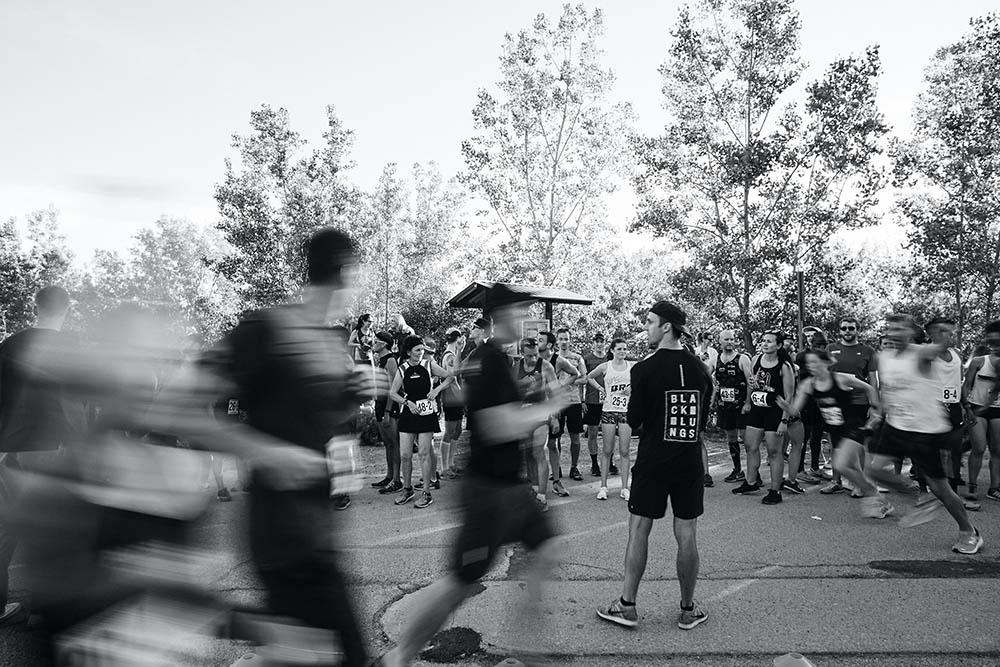
Every summer solstice, in what feels like a strangely quiet, forgotten park, Toronto’s diverse running community comes together to compete for bragging rights (and a few cases of beer). In a city with plenty of race options, this one’s unlike any other. There’s a grassroots, word-of-mouth vibe, and yet hundreds of people turned up on the Leslie Spit on June 21, ready to show off their team singlets.
Organized by The Black Lungs (a local club of speedsters who go by the motto “Run fast. Run far”), The Longest Day/Anthony Davey Memorial Ekiden Relay is an event to commemorate the late Anthony Davey (a greatly missed teammate)—but it’s also an opportunity for the city’s crews to test themselves in an all-out, lung-searing, lactic-overload racing format. It’s all in good fun, especially when you zip past a rival club on one of your legs.
Let’s start from the beginning, though: the original ekiden (Japanese long-distance relay race) was held in 1917 and spanned 508k—from Kyoto to Tokyo—over three days. In Japan, the relay format is still held in high esteem, and it’s considered an honour to represent your school or team in an ekiden.
The Longest Day/Anthony Davey Memorial Ekiden Relay pays tribute to this Japanese tradition by inviting the Toronto running community to enter their teams in a friendly but always competitive race. Almost every crew in Toronto shows up, including the usual suspects: Pace and Mind, Parkdale Roadrunners, Longboat Roadrunners, BlackToe and Manic Run Club, to name just a few.
This year’s format was a departure from years past. In previous ekidens, each team had to complete a marathon distance divided by six runners (two x 5k, two x 6.1k, two x 10k). The mass start was hectic, and you had no idea who was racing which distance—making for a dicey guessing game when deciding who to tuck behind. The last thing you wanted was to be a 10k runner chasing a 5k runner, and gassing out at the turnaround point.
For this year, every racer was tasked with doing four legs of 1.75k. Three runners per team took off in the mass start, then looped back to tag in a teammate. In the days leading up to the race, runners couldn’t help but feel some nerves. “So this is basically mile repeats… I’m going to blow up or throw up” was the consensus. You could go all out, run outside your comfort zone, risk it all, because you could at least try to regain your legs in the five or so minutes you have to recover before doing it all over again. You also could just do it for fun, but once the teams took off, the energy was electrifying. You couldn’t back off, even if you wanted to.
On the longest day of the year, something special happens on the Leslie Spit. According to folklore, Earth seems to stand still on the solstice, but if you throw together 300 running junkies and have them rip mile repeats, nothing stands still—even if you say it’s just for fun.


